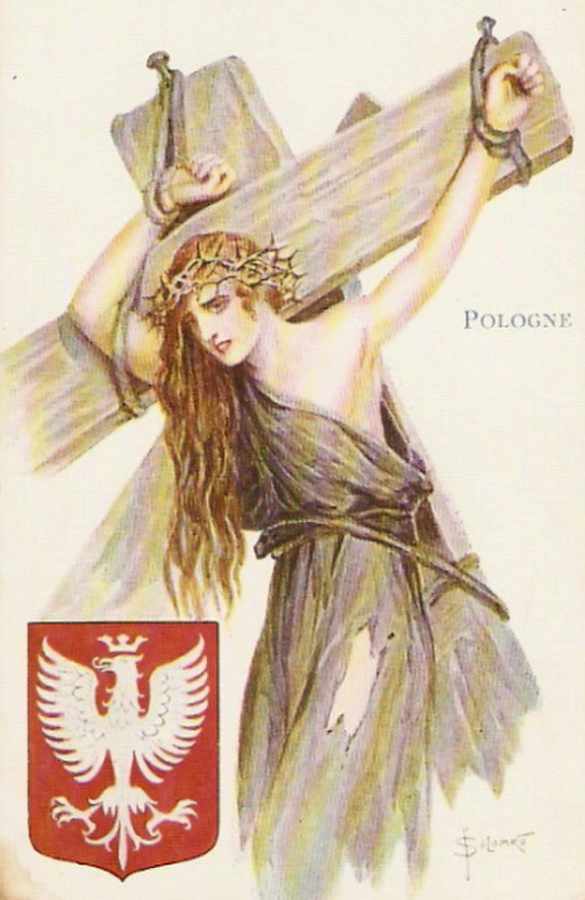Polonia was used as a national personification. The symbolic depiction of a country as a woman called by the Latin name of that country was common in the 19th Century (see Germania, Britannia, Hibernia, Helvetia). The name is most often used in modern Polish as referring to the Polish diaspora.
| Alias Polonia |
| Real Names/Alt Names Polonia |
| Characteristics Personification, Patriot-themed, The Renaissance, Polish |
| Creators/Key Contributors Unknown |
| First Appearance Zwierzyniec (1562) by Mikołaj Rej |
| First Publisher ○ |
| Appearance List Literature: Zwierzyniec (1562) by Mikołaj Rej, Polonia (1632) by Simon Starowolski, Pan Tadeusz (1834) epic poem by Adam Mickiewicz, Quo Vadis (1896) by Henryk Sienkiewicz, Ferdydurke (1937) by Witold Gombrowicz, The Street of Crocodiles (1934) by Bruno Schulz, “The Captive Mind” (1953) essay by Czesław Miłosz, The Painted Bird (1965) by Jerzy Kosiński. Other: engravings and medals (17th century) by various artists, patriotic prints and drawings (1772–1795) by various artists, artwork and prints depicting Polonia in exile or captivity (19th century) by Jan Piotr Norblin, Artur Grottger, political pamphlets, songs, and poetry (1840s–1860s) by various authors, propaganda art (World War I & II) by various artists, commemorative medals, coins, and posters (20th century) by various artists. |
| Sample Read Quo Vadis [PG] |
| Description Polonia was used as a national personification. The symbolic depiction of a country as a woman called by the Latin name of that country was common in the 19th Century (see Germania, Britannia, Hibernia, Helvetia). The name is most often used in modern Polish as referring to the Polish diaspora. |
| Source Polonia (personification) – Wikipedia |

